Old, and Some New, Photographs of Woodbridge & Melton
According to a survey of the manor of Woodbridge late Priory in 1560, Seckford Street was then called Le Fishpond Street. The pasture to the south of the street was named "Le Fishponds" because it contained the fishponds of the Augustan Priory which, until 1542, had stood near St Mary's Church.
The map on the right shows the other features mentioned in the survey overlaid on the road layout from the 1881 OS map. The shaded green area was agricultural land which was part of the demesne of the manor. This land had formerly been retained by the lord of the manor but, by 1560, it was divided up into plots of various sizes which were rented out. The coloured dots mark the approximate locations of the 23 dwelling mentioned in the survey. Some of these dwellings were rented to more than one tenant.
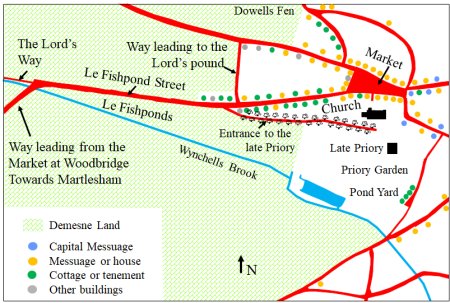
"The entrance to the late priory" ran behind the houses on the southern side of Le Fishpond Street. All that remains of this entrance is a path, now called Monks Walk, lined by an avenue of trees. Below the area where the Priory had stood there were two plots of land described as "the garden of the priory" and "the pond yard". An 1827 map only shows one fish pond along Wynchell's Brook but there may have been others which have subsequently been filled up.
About a third of the way along Le Fishpond Street there was a junction with "the way leading to the Lord's pen". This pen, a pound where stray animals were held, was midway along the lane which was later called Pound Lane.
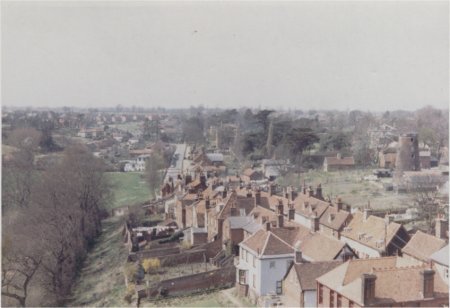
Thomas Seckford purchased the manor of Woodbridge late Priory in 1560. Shortly after he built the house called 'The Abbey' on or near the site of the former priory and created "an enclosed park". Access to the Abbey was via an entrance at the top of Church Street.
In 1575 he obtained a licence from the Queen to found almshouses for the constant residence of thirteen poor men. They were to be accommodated in seven tenements he had just built on northern side of Le Fishpond Street. Seckford ordained that the 13 almsmen would have use of a nearby garden of about 3 acres and of a fountain or well in his "newly enclosed park in Woodbridge". It is probably because of the fountain or well that Le Fishpond Street was being called Well Street by 1587.
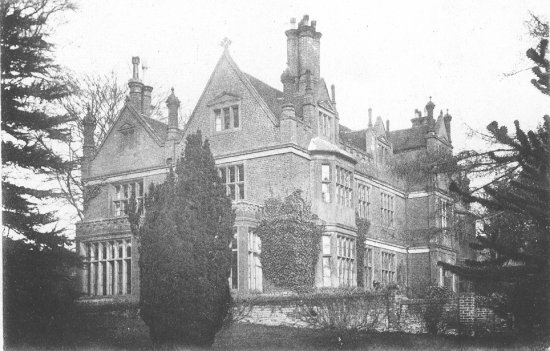
The entrance to Seckford Street.
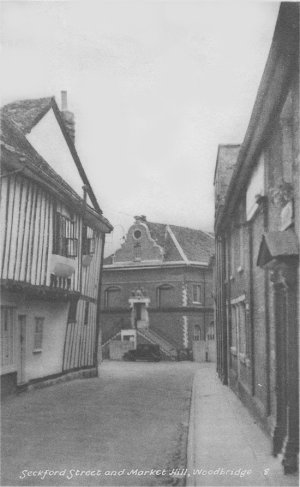
In 1577 a free school for boys was established by Thomas Arnott on what is now Theatre Street.
The school had to close in 1647 because of legal action over the terms his will. The loss of the school was a serious blow to the town so, in 1662, three local people decided to create the Woodbridge Grammar School in a house on Well Street (Seckford Street) which abutted the north end of the churchyard. The white arrow, on the photograph to the right, marks the location of the house.
When the number of scholars increased the house was found to be too small, and it was enlarged in 1665, 1670 and 1694 by public subscription. The schools flourished during the period 1796 to 1814 when it attracted pupils from the families of the officers stationed in garrison near the town but it then when into decline after the departure of the troops in 1814.
In 1861 ailing grammar school was amalgamated with the the almshouses and hospital. They were administered by a single charity which eventually became the Seckford Foundation. Soon after the school was moved to its present site off Burkitt Road and was expanded. Although the school took up most of the available funds the Foundation was also able to improve conditions for the poor in the town.
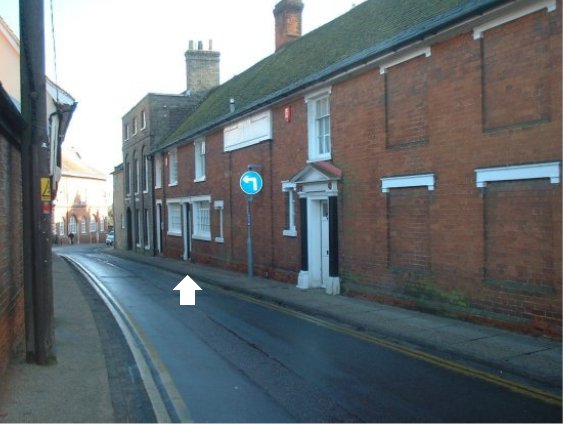
Phot832
Although the school took up most of the available funds the Foundation was also able to improve conditions for the poor in the town. To that end the Seckford Foundation opened a dispensary in a room at the Hospital. It provided "medical advice and medicines to the residents of the Hospital and Almshouses and to those inhabitants of the town and neighbourhood who could not afford to pay for treatment – but only if they were not receiving support from the parish". The Dispensary was also available to those who were nominated by “subscribers” This facility was used by some employers to provide medical treatment for their employees. The cost for each person nominated was 10s 6d per annum.
In 1876 the Dispensary was moved into the house in Seckford Street which had previously been occupied by the Free Grammar School. Finally, in 1886, a vacant plot adjacent to this house was used for a custom built Dispensary (erected at a cost of £1500). There were two wards named Victoria - after the Queen - and Dorothy - after the last of the Seckfords. The Dispensary provided medical services to the poor of Woodbridge and the neighbouring parishes until the introduction of the National Health Service in 1948. It was then used as the HQ of the Woodbridge Red Cross until 1974 and has since been converted to private flats.
The Seckford Foundation also set up a free library. At first this consisted of a few volumes occupying some shelves in the shop of a hair dresser on the Market Hill. The library expanded considerably when, in 1875, it was moved into part of the building on Seckford Street formerly used by the grammar school. By 1951 the Seckford Library was a branch of the East Suffolk County Council’s Library Service. When they opened the Oak Lane Library in July 1970 the local history documents in the Seckford Library were retained as the “Seckford Collection”.
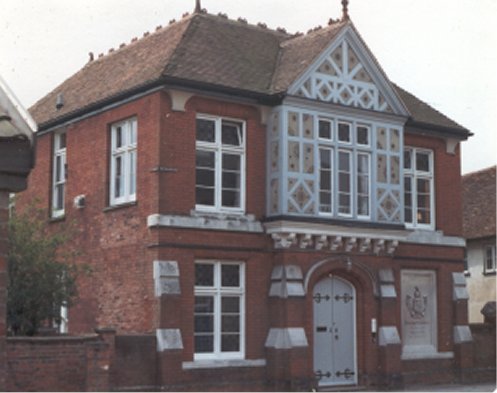
Phot832 Next photograph in this series